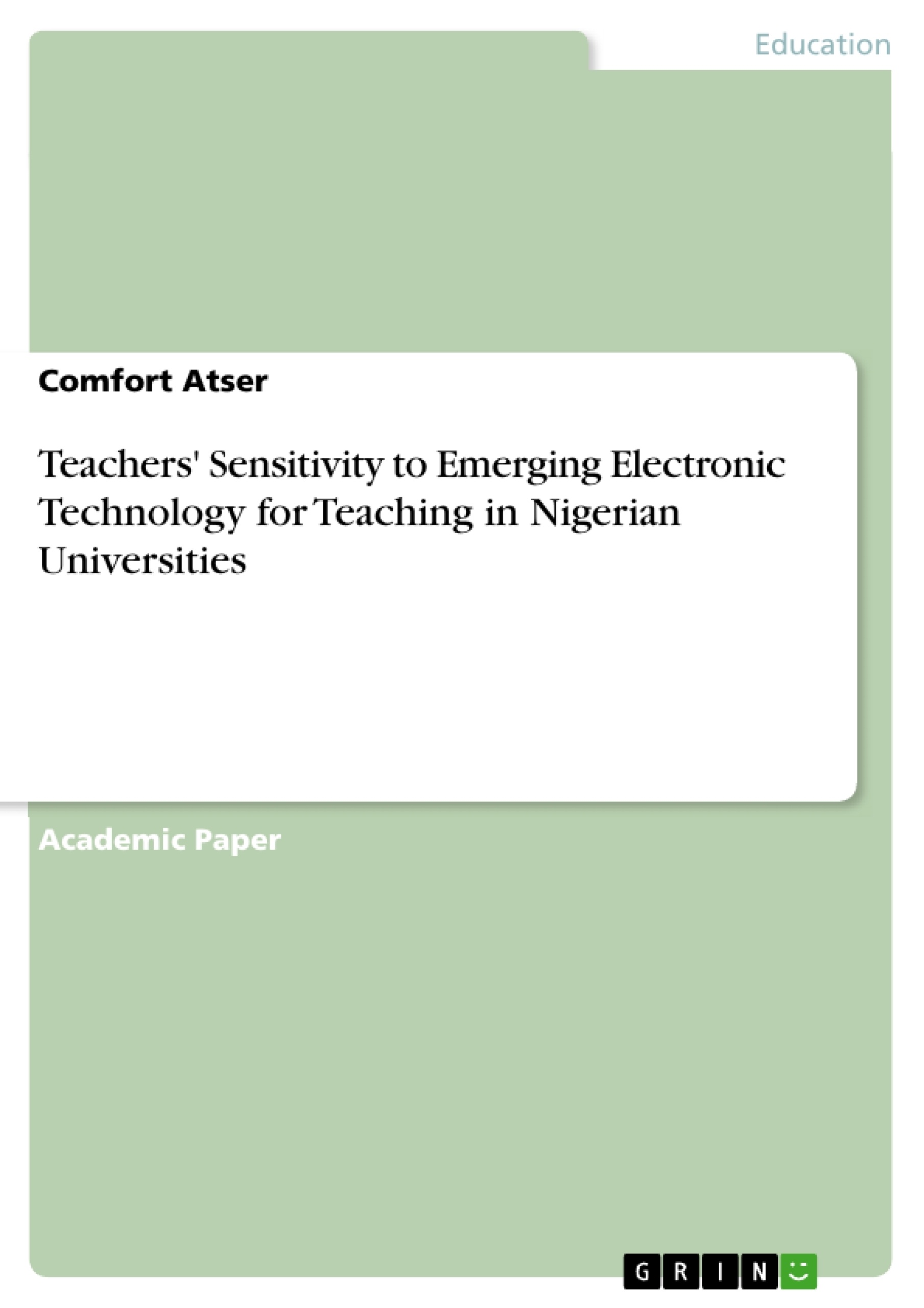This study was done to gauge the sensitivity of University teachers to the use of emerging technologies for teaching in Nigerian universities. The study was a survey of the academic of the Faculties of Education in Universities across North Central Nigeria. The study is borne out of the need to x-ray some complexities in the Nigerian educational system that may likely underlie the rather slow pace and magnitude of use of relevant emerging technologies in teaching in Nigerian universities. The paper attempted to measure the level of awareness and responsiveness as well as proficiency among university teachers in the use of emerging technologies like use of personal computers, computerized grading, e-textbooks, gammification, simulation, active and flipped classrooms in teaching. A semi-structured questionnaire was used to collect data which was analyzed using simple percentages. Findings indicate that the percentage level of awareness of the existence of some relevant technologies for teaching is generally very low while teacher responsiveness is as low and invariably poor. The percentage skill level was also very low. It was concluded that the relative slow pace of the application of emerging ICT for teaching in Nigerian universities is likely connected with teachers’ sensitivity to the use of such ICTs in teaching. It was recommended among other things that educators generally and university teachers in particular should be made aware of relevant emerging technologies through policies and regulations that ensure teachers at such a discerning level of education are fully trained and incentivized to use the relevant ICT in delivering their diverse services like the most needed rich scholarly content as well as relevant skills for the 21st Century learner.
Inhaltsverzeichnis (Table of Contents)
- Abstract
- Introduction
- Conceptual Clarifications
- Methodology
- Results and Discussions
- Conclusions and Recommendations
- References
Zielsetzung und Themenschwerpunkte (Objectives and Key Themes)
The study aims to assess the sensitivity of university teachers in Nigeria to the use of emerging technologies in teaching. It investigates the level of awareness, responsiveness, and proficiency of teachers in utilizing technologies like personal computers, computerized grading, e-textbooks, gamification, simulation, and active/flipped classrooms.
- Teachers' awareness of emerging technologies for teaching
- Teachers' responsiveness to the use of emerging technologies in the classroom
- Teachers' proficiency in utilizing relevant emerging technologies
- The impact of emerging technologies on the quality of higher education in Nigeria
- Challenges and opportunities associated with integrating technology in Nigerian universities
Zusammenfassung der Kapitel (Chapter Summaries)
- Abstract: This chapter provides an overview of the research study, outlining its purpose, methodology, and key findings. It highlights the need to investigate the use of emerging technologies in Nigerian universities.
- Introduction: This chapter discusses the role of technology in contemporary society, particularly in education. It examines the slow adoption of ICT in Nigerian universities and explores the reasons behind this trend.
- Conceptual Clarifications: This chapter defines key terms such as "higher education," "electronic technology," and "teachers' sensitivity to the use of technology."
- Methodology: This chapter outlines the research design, data collection methods, and analysis techniques used in the study. It describes the sample, instruments, and procedures used.
- Results and Discussions: This chapter presents the findings of the study and interprets the results in relation to the research questions. It analyzes the data collected on teachers' awareness, responsiveness, and proficiency in using emerging technologies.
Schlüsselwörter (Keywords)
The primary keywords and focus topics of this study include teacher sensitivity, emerging technology, Nigerian universities, higher education, ICT integration, educational reforms, and quality of instruction.
- Citation du texte
- Comfort Atser (Auteur), 2018, Teachers' Sensitivity to Emerging Electronic Technology for Teaching in Nigerian Universities, Munich, GRIN Verlag, https://www.grin.com/document/439056



